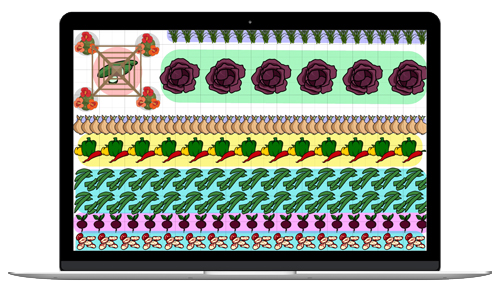
Planting, Growing, and Caring for Delphinium
The Almanac Garden Planner - Use It Free for 7 Days!
Plan your 2025 garden with our award-winning Garden Planner.
- Belladonna Group: blue flowers native to North America; easier to grow and longer-lived than varieties in the Elatum Group (below); upright, loose, and branching perennials; secondary flower spikes extend bloom period into autumn; 3 to 4 feet tall. ‘Blue Donna’ has clear, blue flowers.
- Elatum Group: tallest varieties in shades of violet, blue, pink, and/or white; short-lived; reach 6 feet tall or more. ‘Aurora Deep Purple’ has purple flowers with a white center.
- Pacific Hybrids: 3-inch violet, blue, and pink flowers; short-lived; tolerate warm/hot climates as annuals; giant (3- to 6-foot) heirlooms and dwarf hybrids. ‘King Arthur’, 5 to 6 feet tall, has plum flowers with white centers.
ADVERTISEMENT
Cut the plant down to about 6 to 8 inches after the first killing frost in autumn. You can then store the pot in the basement. Just remember to water the plant a couple of times during the winter months just so that the roots don't get too dry.
Comments are to plant in spring, can I split and transplant now in August? I live in nw Ontario not sure of the zone.
Hi, Trucia: Delphiniums are not the hardiest plants to divide and transplant to begin with (starting from seed often works better), but if you do wish to divide and transplant, it's best to do it in the early spring, after they've had a chance to regroup over the winter. Then again, there might not be much to lose, so up to you. Thanks for asking!
I grew my first ever delphiniums from seeds and have 4 plants that are very tall and planted up against the porch rail that I use to give them support.
My question is...I live in zone 8b. Will my dephiniums come back next year or should I consider them as annuals?
For heat zones above zone 7, it is recommended that you grow them where they get afternoon shade. Consider them to be short-lived perennials in your zone or you can grow them as annuals.
Hi, I'm in Edmonton Alberta, our Delphs are huge, tall, and full, we're very happy with them, except that once a season the rain or wind will pummel them or the weight of them will bring a bunch down, I didn't realize I could stake them, my question is this, if they're grown is it too late to stake them? The ones that have been knocked down from the wind, should I cut them back and see if they'll get a second bloom, if they do would I stake the second bloom? It's mid July so realistically In Alberta I'll get good weather all of August at least most of sept and some years we won't see first frost til early oct.
Hi, K-Mi: You can always stake anything at any time. What we mean by the advice above to stake when they are small is that this is the best way to help them get tall. But if yours get tall without any staking to begin with, that advice is irrelevant. So go ahead and stake what you have standing. Cut back what has fallen and then stake what regrows when that happens. Good luck and thanks for asking!
Our delphinium have never done well. Out of the original three plants, only one survives (@ 4 years). Now that I've read all these ideas, we're going out back with manure, lime, and two new plants! Wish us luck! We live in central Massachusetts.
I have beautiful, green foilage on my 3ft high delphiniums but never any blooms. When they were new, they bloomed the first few years. Now nothing. I keep thinning them out to no avail. Why won't they bloom?
How is the soil? Delphs are heavy feeders: they benefit from fertilizer and/or compost in spring and summer, and some say balanced fertilizer every 2 to 3 weeks, in growing season. Soil must also be well draining. They do not like dry, hot climates; sound like home? They like full sun to partial shade. We're betting that this, in whole or in part, is the main issue.
Do you prune/cut off lateral flower spikes? Doing so may help the main spike to bloom.
Do you cut back stalks to basal leaves in fall? This could help but not until next season, of course.












